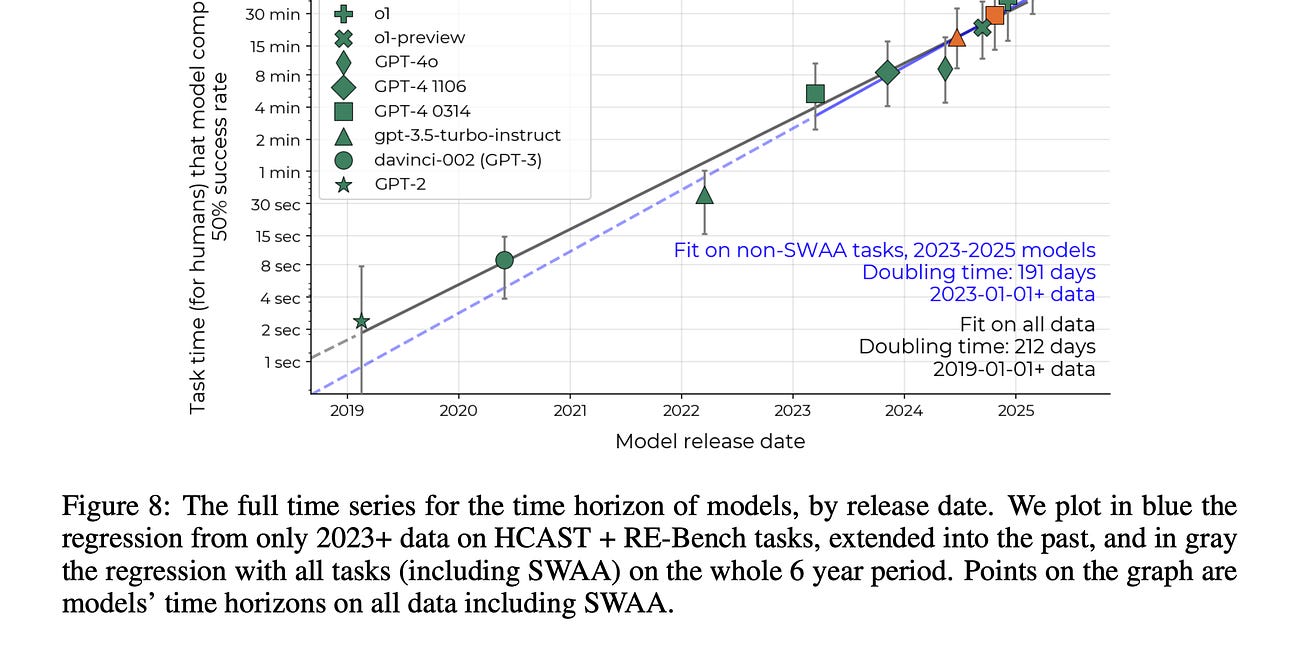This week I’ll keep it brief and quickly share speaker notes for the talk I’m holding at B2B Digital in Rotterdam coming Thursday (May 15th).
The gist of my talk is that whether or not software is “agentic” isn’t that important.
In order to assess how useful an AI system is, you need to take into account a second dimension—data integration depth:
It’s only with deep data integrations that AI solutions generate real value.
Right now these data integrations are mostly happening through you or your employees.
By leveraging your business expertise while you are using these AI tools, you are in fact forming the bridge between the AI system and the business.
When you or one of your employees is using ChatGPT to draft a sales email, they are at that point in time an interface between the business and the AI system.
This is of course horribly inefficient.
And the new “agentic” systems that are coming onto the market today offer very generic data interfaces because they are still early-stage solutions.
So while AI agents from Clay.com, Relevance AI and so on do leverage the new technological capabilities opened up by advances in AI, they lack the in-depth knowledge of your business, niche, market or customers to truly succeed.
That’s why I’lll focus on top right cases in my talk on Thursday.
Because this is where I think the future lies—in autonomous agentic AI systems with deep data integrations.
AI systems that can run your proprietary processes on autopilot without messing up.
So if you’re still manually copying and pasting stuff from ChatGPT, it’s probably time to rethink your approach toward AI and automation.
As we discussed in an earlier edition, the rate at which AI systems can perform tasks without direct human supervision is doubling roughly every seven months:
Plotting The AI Agent Growth Curve
It’s funny how I’m using deep research in Perplexity Pro on a daily basis, even though two months ago “deep research” didn’t exist in any consumer product.
It has gone from 30 seconds in 2022 to 30 minutes today.
And going by METR predictions, it will be roughly 60 minutes by end of this year.
60 minutes of unsupervised work is more than most of your employees.
We will probably see the first of these next-gen AI systems go live in the next couple of months, given how much money is being thrown at AI.
If you want to learn how to leverage deep data integrations in AI automations, I’ve put together a free 5 day email course to help you on your way—it’s linked below:
A quick note on talking agents
Besides integrations with your business environment, another key factor to take into consideration when you go shopping for agents is how well they will integrate with their environments.
Luckily a team of researchers at Shanghai Jiao Tong university just published a research paper looking at how AI agents communicate in the wild.
They mapped out the communication protocols of the four most popular AI agent frameworks used in industry today (MCP, A2A, ANP and Agora):

As can be seen from the diagram, different models for AI agent communication and collaboration lead to completely different ecosystems in which these agents operate.
So while high agency and deep data integrations are key dimensions, they are not the only thing that will decided whether or not your AI deployment will be successful.
A mature and thriving ecosystem will significantly reduce implementation costs and boost AI system capabilities.
Because factors like extensibility, interoperability, the number and quality of tools these AI agents have access to could help make the difference between a successful agentic AI implementation and one that never lived up to expectations.
Interested in learning more? Sign up for our free 5-day AI & automation email course:
Last week in AI
Mistral AI released Mistral Medium 3 on May 6, 2025, an upgraded version of its language model, now accessible via its API. Companies can explore Mistral Medium 3 for tasks demanding high accuracy and nuanced understanding, potentially enhancing their AI-driven products and services.
OpenAI announced a structural reorganization on May 7, 2025, to better align its research, product, and safety efforts towards building beneficial AGI. Businesses and professionals can anticipate potentially faster innovation cycles and more cohesive AI tool offerings from OpenAI as a result of this internal evolution.
In an extension of the Stargate Project OpenAI launched its 'OpenAI for Countries' initiative on May 8, 2025, aiming to collaborate with nations worldwide on AI safety, governance, and innovation. For businesses, this initiative could lead to clearer regulatory landscapes and promote international standards, facilitating safer and more widespread AI integration.





